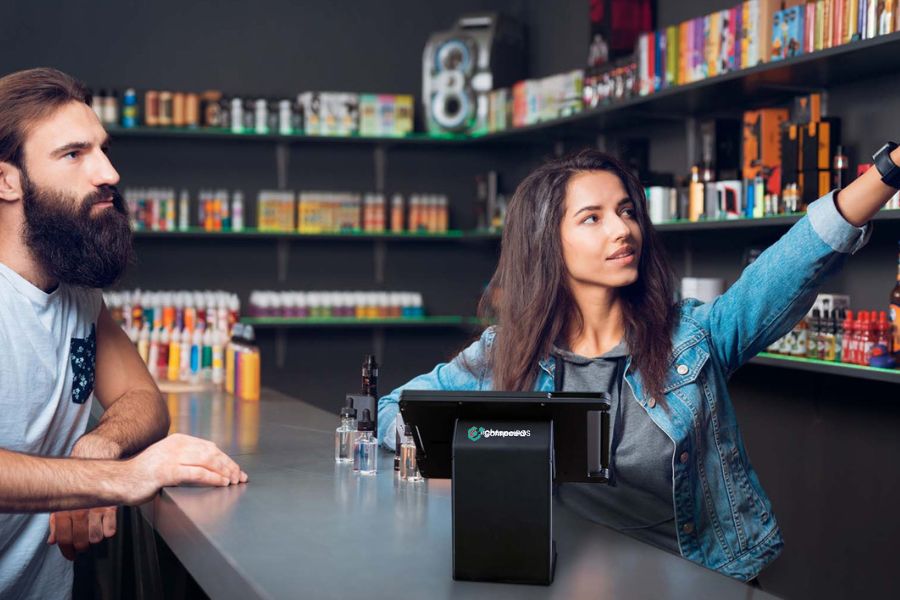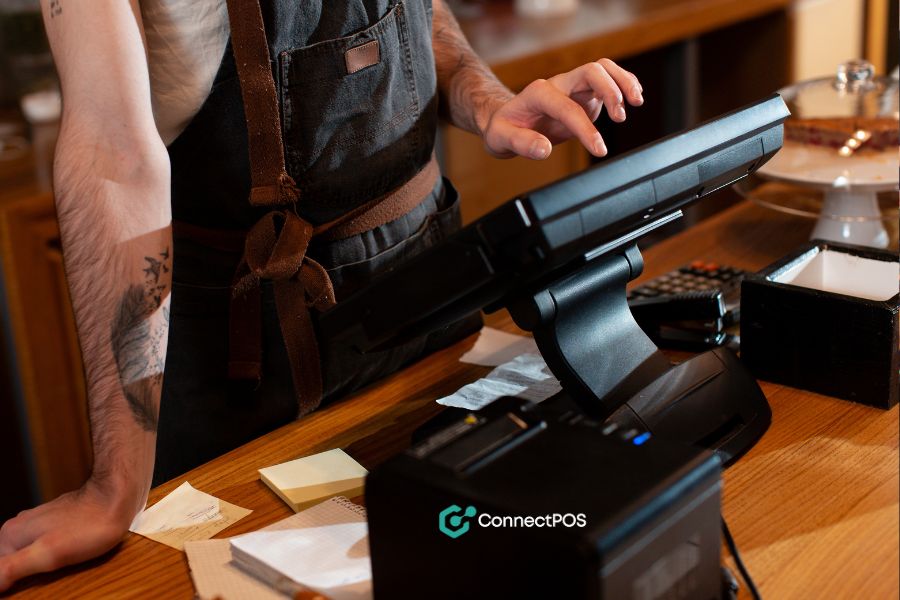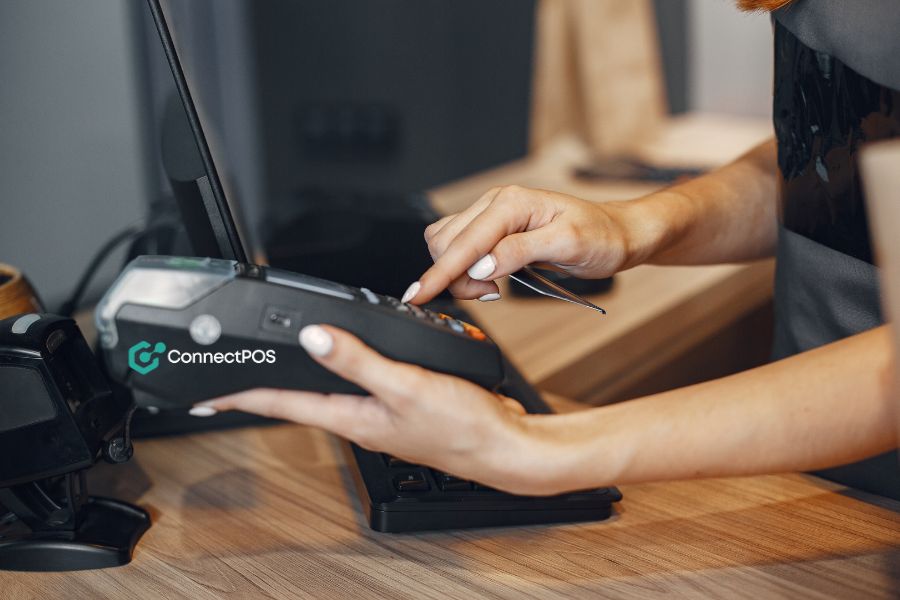Running a fashion retail business means navigating constant inventory shifts, seasonal trends, and high customer expectations. Managing all of that manually? It’s inefficient and risky. That’s where fashion POS software comes in. Built specifically for apparel retailers, this type of system simplifies day-to-day operations, from tracking stock variations to delivering a smoother checkout experience.
In this guide, we’ll walk through the core features and practical benefits of fashion POS software, so you can manage your product range with greater accuracy and keep your store running more effectively.
Highlights:
- Fashion POS software is a retail system built to handle product variants, customer data, and sales across channels, tailored specifically for clothing and apparel businesses.
- To choose the right POS software, focus on your sales channels, inventory needs, integration options, and how easily your team can use it day to day.
Fashion POS Software: Overview
Fashion POS software is a retail management system tailored for clothing, footwear, and accessory stores. Its goal is to address the specific challenges of fashion retail, such as managing size and color variations, handling returns, and syncing inventory across multiple sales channels.
The software connects in-store systems with online platforms, creating a unified view of sales, inventory, and customers. Whether you’re running one boutique or managing several locations, fashion POS software gives you the tools to maintain consistency and avoid costly stock issues.
It also supports automation of routine tasks like reordering, discount scheduling, and customer engagement. With an easy-to-use interface and flexible settings, the system helps fashion retailers stay organized, serve customers better, and make smarter business decisions based on real-time data.
Key Features of Fashion POS Software
To stay competitive in fashion retail, you need a POS system to support every part of your operation, from the sales floor to the stockroom to online orders.
- Sales and Checkout Capabilities: A robust fashion POS system processes transactions quickly and supports various payment types, including cards, mobile wallets, and store credit. It should also support split payments and partial refunds, common in apparel retail. Fast checkout keeps lines short and improves the shopping experience, especially during sales or new arrivals.
- Inventory Management: Fashion inventory is complex, often involving multiple sizes, colors, and styles for each item. A fashion-specific POS keeps stock levels updated in real time, so you know exactly what’s available across all locations and online. Look for features like automatic reordering, barcode scanning, and seasonal product tagging to keep your inventory under control.
- Customer Relationship Management (POS CRM): Fashion is personal, and customer loyalty matters. POS software with integrated CRM features lets you track purchase history, product preferences, and birthdays. You can use this data to offer targeted promotions, send restock alerts, or reward repeat customers through loyalty programs.
- Multi-Store and E-commerce Integration: Many fashion retailers operate both physical and online stores. Your POS should work across all channels without causing data conflicts. Look for a system that syncs customer data, stock levels, and pricing in one place. This prevents overselling and creates a consistent experience across all touchpoints.
- Reporting and Analytics: Smart decisions come from clear insights. Fashion POS software should include visual dashboards and detailed reports on sales performance, fast-moving items, and customer shopping behavior. Thus, you can better plan for promotions, adjust pricing, and manage staff, all based on actual trends.
- Returns and Exchange Management: Returns are common in fashion retail, and handling them smoothly matters. Look for a system that supports quick returns, exchange tracking, and refund flexibility, while automatically updating your inventory records.
- Staff Management: Tracking employee performance and managing sales targets is easier when it’s built into your POS. Features like sales by staff member, time tracking, and role-based access are useful when monitoring productivity and preventing unauthorized changes to pricing or inventory.
Benefits of Using Fashion POS Software
Fashion POS software brings structure to retail operations while improving the way businesses interact with customers and manage stock. From small boutiques to growing chains, the right system can support higher sales, better customer experiences, and more accurate inventory control.
Improved Sales and Checkout Efficiency
Speed matters in fashion retail, especially during peak shopping hours or limited-time promotions. A fashion POS system processes transactions quickly and supports various payment methods, including credit cards, mobile wallets, and buy-now-pay-later services. Barcode scanning and mobile POS features reduce wait times and allow staff to assist shoppers right on the floor.
Retailers using modern systems often report up to a 30% drop in checkout times. This improves the in-store experience and reduces the chances of customers walking away before completing a purchase.
Enhanced Customer Experience and Personalization
Retaining customers and increasing brand loyalty requires knowing their preferences and providing tailored services. With purchase history and style preferences saved in the POS system, staff can suggest items that match past buys, notify customers about new arrivals, and offer tailored discounts. These personalized experiences increase repeat visits and improve customer retention.
Accenture found that 91% of shoppers are more likely to buy from businesses that recognize their needs and recommend relevant products. A fashion POS with built-in CRM tools makes that possible without extra manual work.
Better Inventory Control and Loss Prevention
Tracking apparel inventory is complex, with multiple sizes, styles, and colors often tied to a single product. A fashion POS monitors stock as items are sold or returned, preventing stockouts and overordering. Reorder points and sales trends can be used to plan more accurately for upcoming seasons.
Retailers using real-time inventory tools often see fewer stock discrepancies and better sell-through of key products. Brands like Zara use this approach to keep stores stocked with popular items while minimizing excess inventory.
Increased Profitability and Business Insights
Fashion POS software provides reports on what’s selling, who’s buying, and how different locations are performing. This helps owners adjust pricing, shift inventory between stores, or fine-tune marketing campaigns based on actual data.
McKinsey research shows that businesses using data in daily decisions can improve profits by up to 6%. These insights aren’t buried in spreadsheets, they’re built directly into the system, ready to guide the next move.
Efficient Returns and Exchanges
Returns are a natural part of fashion retail. A good POS system supports quick returns and exchanges, updates stock immediately, and tracks return reasons. This keeps inventory accurate and simplifies the process for both staff and customers.
How to Choose the Right Fashion POS Software for Your Business?
Finding the right POS software means choosing a system that fits how your store operates today and can grow with your business over time.
Below are key aspects to consider when choosing the best fashion POS software for your business.
- Identify Your Business Needs
Start by reviewing your store setup, sales volume, and where you sell. A boutique with a single location may prioritize ease of use, while a fashion brand with several stores and an online presence may need more advanced tools for managing multiple sales channels and centralized reporting.
- Review Core Features and Scalability
Make sure the system handles key functions such as inventory tracking, CRM, transaction processing, and reporting. Then consider how the system performs as you grow. Can it support more users, additional stores, or higher sales volume without slowing down?
Cloud-based systems are often more flexible, with automatic updates and built-in features that support expansion without requiring separate installations.
- Check Integration with Other Tools
Your POS should connect smoothly with platforms you already use, such as Shopify, WooCommerce, QuickBooks, and major payment gateways. Without solid integration, you may end up duplicating work or dealing with data mismatches.
When systems work together, you can manage everything from stock levels to accounting in one continuous workflow.
- Budget and Cost Considerations
Fashion POS software pricing depends on features, the number of users, and the setup method. While low-cost options might seem appealing, they often come with limited features or hidden fees for transactions and support.
Compare setup fees, monthly plans, hardware costs, and potential add-ons to understand the full cost. Choose a solution that fits your needs without cutting corners on functionality.
- Customer Support and Reliability
Reliable support is non-negotiable in retail. Look for providers that offer round-the-clock support, onboarding resources, and a responsive service team. Check reviews to see how quickly issues are resolved during busy periods.
Also, prioritize a system with a strong record of uptime, regular updates, and secure data handling. Your business depends on it running consistently without interruptions.
Top 3 Fashion POS Software Solutions in 2025
Fashion retail comes with unique challenges – seasonal stock shifts, product variations, and the need for consistent customer experiences across in-store and online channels. In 2025, several POS systems will continue to stand out by addressing these needs directly.
In this section, you’ll find a closer look at three proven effective platforms for fashion businesses: ConnectPOS, Shopify POS, and Lightspeed.
ConnectPOS
ConnectPOS is a cloud-based POS system built for retailers who sell across multiple channels. It focuses on real-time operations, smooth integration with major eCommerce platforms, and strong inventory and CRM tools, making it especially suitable for fashion businesses managing complex product catalogs and customer expectations.
Key Features:
- Omnichannel Management: Inventory, sales, and customer data stay consistent across online stores, marketplaces, and brick-and-mortar locations. This is especially useful for fashion retailers juggling multiple SKUs across sizes, styles, and colors.
- Real-Time Inventory Management: The system offers robust inventory tracking, allowing retailers to monitor stock levels, automate updates, and receive alerts for overstock or out-of-stock items.
- Mobile POS Functionality: Staff can assist customers, check inventory availability, and complete sales using tablets or smartphones. This supports clienteling and improves conversion rates, especially during peak shopping periods or events.
- Customer Engagement Tools: Customer data is stored automatically during checkout. Retailers can use this to send targeted offers, track purchase preferences, and reward loyal shoppers.
- Multiple Payment Methods: The platform supports a wide range of payment options, including traditional card payments, mobile wallets, and even cryptocurrency, catering to diverse customer preferences.
- Multi-Platform Integration: ConnectPOS integrates directly with Magento, Shopify, WooCommerce, and BigCommerce. For fashion retailers operating across multiple storefronts, this removes the need for manual syncing or third-party plugins.
- Multi-Location and Multi-Warehouse Support: Manage stock across several stores and warehouses from one dashboard. Easily transfer products between locations, track performance by store, and monitor stock aging.
ConnectPOS delivers a more tailored experience for fashion retailers who rely on omnichannel selling compared to other POS systems. It supports fashion-specific workflows like product variant management, mobile selling, and seasonal inventory planning, while keeping data aligned across every platform. For retailers looking for a scalable system that works in both physical and digital spaces, ConnectPOS offers a more complete solution than most general-purpose options.
Shopify POS
Shopify POS is designed to integrate tightly with the Shopify eCommerce platform, making it a solid choice for retailers who already run their store online through Shopify or plan to build one soon.
Key Features
- Centralized Sales Management: Shopify POS enables retailers to oversee both in-store and online transactions, providing a unified view of sales performance.
- Mobile POS Functionality: The system supports mobile devices, allowing sales associates to assist customers and process transactions anywhere in the store.
- Inventory Tracking: Retailers can monitor stock levels across multiple locations, ensuring accurate inventory management and timely replenishment.
- Customer Profiles: Shopify POS builds detailed customer profiles based on purchase history, enabling personalized marketing and loyalty programs.
Shopify POS works best for retailers who already use Shopify as their main online platform. The connection between the POS and the eCommerce backend is automatic, simplifying setup. However, for retailers looking for more tailored inventory workflows or advanced reporting, the system may require add-ons.
Lightspeed
Lightspeed is a cloud-based POS and retail management platform known for its advanced inventory and reporting features. It’s a good fit for fashion brands with multiple locations or a large number of SKUs.
Key Features
- Advanced Inventory Management: Lightspeed offers tools for tracking stock levels, managing product variations, and automating reordering processes, ensuring optimal inventory control.
- Multichannel Support: The platform enables retailers to manage sales across physical stores and online platforms, providing a cohesive shopping experience for customers.
- Integrated Payments: Lightspeed supports seamless payment processing, reducing the need for third-party integrations and simplifying transactions.
- Real-Time Reporting: Retailers have access to detailed analytics and reports, allowing for data-driven decision-making and strategic planning.
Lightspeed is ideal for fashion retailers with complex inventory needs or those operating multiple locations. Its robust inventory management features and scalability make it suitable for businesses looking to optimize operations and expand their reach.
FAQs: Fashion POS Software
- Can fashion POS software be integrated with an online store?
Yes, most fashion POS systems seamlessly integrate with e-commerce platforms like Shopify, WooCommerce, and Magento, enabling real-time inventory synchronization, unified sales tracking, and a consistent omnichannel shopping experience.
- How much does a fashion POS system cost?
The cost varies based on features, scalability, and provider. Basic systems start at $50/month, while advanced solutions for multi-store retailers range from $100 to $300/month, plus hardware costs.
- How can a POS system help with inventory management in a clothing store?
A POS system tracks stock levels in real-time, manages product variations (sizes, colors), automates restocking alerts, reduces overstocking, and prevents stockouts, ensuring optimal inventory control and better sales efficiency.
Conclusion
A comprehensive fashion pos software brings structure to daily operations and clarity to business decisions. It connects in-store and online activity, keeps inventory accurate down to the last item, and helps staff deliver a more tailored shopping experience.
For fashion retailers, this means fewer missed sales, faster service, and smarter decisions backed by real data. Instead of juggling disconnected tools, everything runs through one platform built to handle the pace and complexity of modern retail. That shift doesn’t just simplify work – it drives real growth.
ConnectPOS offers advanced omnichannel capabilities, real-time inventory tracking, and smooth integrations if you’re searching for a reliable and feature-rich fashion POS solution. Contact us today to discover how our system can elevate your fashion retail business.
ConnectPOS is a all-in-one point of sale solution tailored to meet your eCommerce POS needs, streamline business operations, boost sales, and enhance customer experience in diverse industries. We offer custom POS with features, pricing, and plans to suit your unique business requirements.




